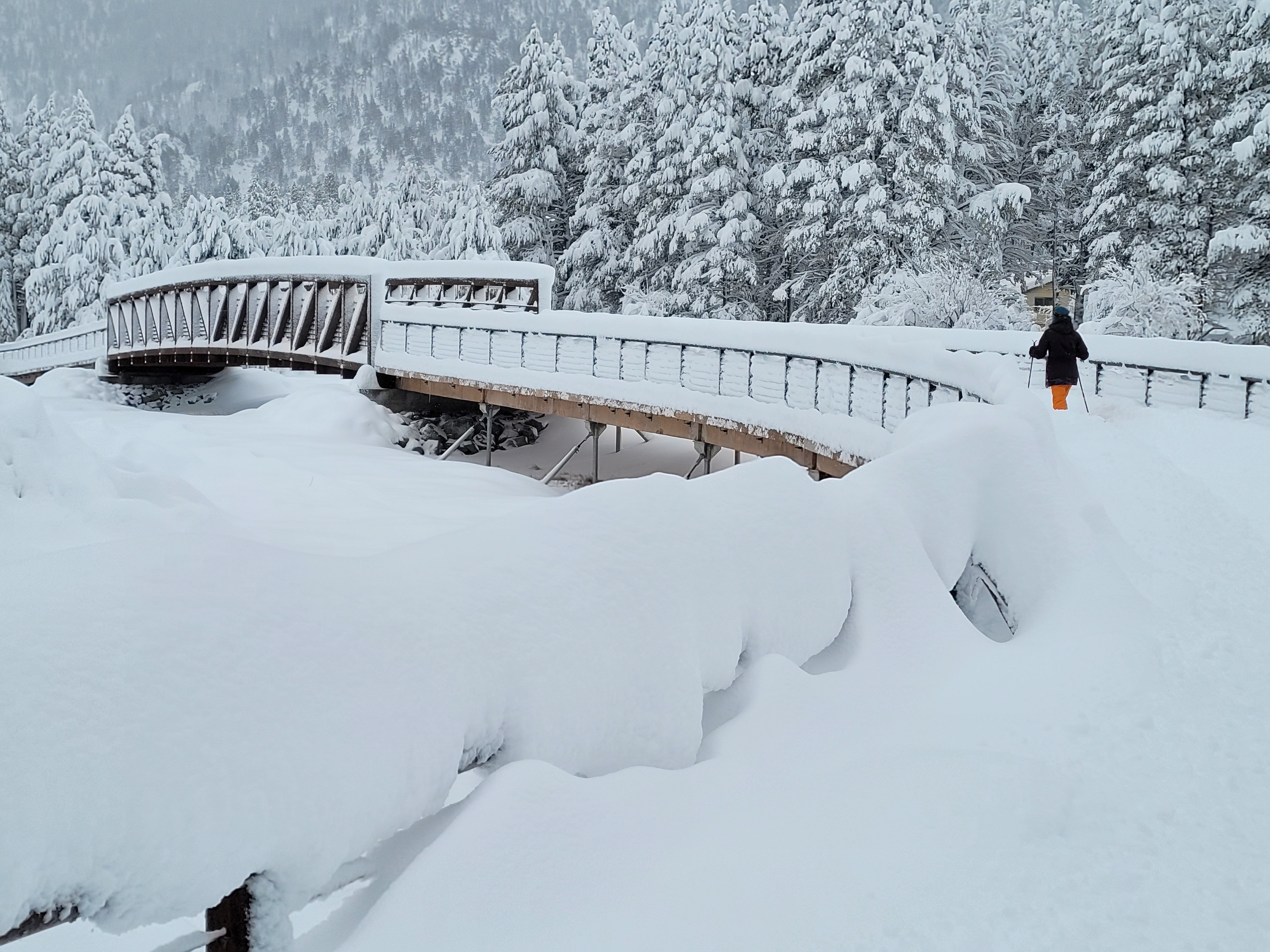In harsh climates—particularly those with heavy snowfall—there is an added level of complication to boardwalk design, as you have to account for the impact that the constantly changing environmental factors will have on the structure.
For engineers and landscape architects working on pedestrian bridge projects in these types of environments, it’s important to consider the following 3 items during the design process:
1. Loading Requirements and Strength
In Northern climates, snow loads can quickly accumulate and become quite heavy. Boardwalk structures need to be strong enough to withstand these weights and may also need to withstand the weight of maintenance vehicles, including snow removal equipment.
Snow loads can vary from zero in warmer climates to over 700 pounds per square foot in cold mountainous climates at high elevations! AASHTO provides very limited guidance on snow loads, and boardwalk designers generally refer to ASCE-7 charts to determine “ground snow loads.” Ground snow load is then multiplied by several factors to arrive at a final design snow load for use by the structural engineer. In some areas, charts cannot be accurately relied upon and site specific case studies are required to determine an appropriate design snow load.
It is also important to consider the density of snow. Density can vary from around 6 pounds per cubic foot (pcf) for freshly fallen snow to 31 pcf for compacted snow. Snow in western states is generally drier and weighs less than the heavier wet snow typical on the east coast.
For concrete boardwalks, the amount of reinforcing steel in the concrete can easily be adjusted to provide the right amount of strength for unique loading conditions such as snow and maintenance equipment. This flexibility provides engineers confidence in the economy and durability of their designs.
2. Impact of Environmental Conditions on Durability and Safety
The extreme temperature changes in Northern climates can have a huge impact on the lifespan of a boardwalk, as well as its safety, so it’s vital to carefully consider the materials that will be used on the project.
In some harsh climates, boardwalks need to be able to withstand both freezing temperatures and extreme heat. In California and Nevada, for example, a boardwalk may have to endure a wildfire one month and heavy snowfall the next month.
Boardwalk material fire resistance ratings may be an important consideration depending on your project location. While timber and composite materials are combustible and likely cannot withstand fires, precast concrete is a noncombustible and durable choice for these projects.
Regardless of whether fires are common in a project location, continuous freezing and thawing cycles in harsh climates are not ideal for all material types. For timber and composites, this can lead to warping and rotting, which not only causes excess maintenance and replacement costs, but also tripping hazards for pedestrians and bicyclists.
PermaTrak’s concrete mix is modified with air entrainment for freezing conditions to help the concrete adjust during expansion and contraction, and because it’s a modular system, PermaTrak can accommodate movement that results from expansion and contraction. In terms of durability, concrete is a tested product that is known for its success in harsh climates and is often the material of choice for all types of construction projects in these environments.
In these cool, damp climates, slip resistance becomes an important consideration for pedestrian boardwalks in order to avoid serious injuries. A recent Boardwalk Material Slip Resistance Study compared the slip resistance ratings of timber, composite, and precast concrete in both wet and dry conditions.
ANSI A326.3 states surface flooring materials expected to be walked upon when wet with water shall have a wet DCOF of 0.42 or greater. The study found that every PermaTrak concrete texture exceeded the DCOF value in both wet and dry conditions, while timber and composite solutions did not meet the DCOF value when wet.
3. Labor Costs for Construction in Harsh Conditions
In our experience, labor costs in harsh climates and at high elevations are often higher than usual. This can be attributed to additional training needed for workers, delays due to unpredictable weather, etc.
Because of the increased labor costs, there’s more incentive to choose a boardwalk material that can be put there once and left for the long term. Although timber and composite materials may be easier to transport to the project site initially, the boardwalk life cycle costs could ultimately outweigh the one-time installation costs of concrete once maintenance, repairs, and replacement costs of timber or composite are accounted for.
Dustin Harrington, a Senior Civil Engineer at the County of El Dorado in Nevada chose PermaTrak for a boardwalk on the South Lake Tahoe Trail. They’re currently working on a second PermaTrak bridge on the trail. When asked why he chose PermaTrak, Dustin said, “On our greenway project in South Lake Tahoe, we had a significant snow load and seismic loads were also a factor that had to be considered… We were looking for something that would be long-term. We didn’t want to have something that would be a chore to maintain.”
PermaTrak has completed a number of precast concrete boardwalks in these Northern climates. Check out a few of the projects below:
- Pikes Peak Summit Complex in Colorado
- Farmington Canal Heritage Trail Extension in Connecticut
- Norwottuck Branch Rail Trail Boardwalk in Massachusetts
Photo credit: Karen Fink, Tahoe Regional Planning Agency





